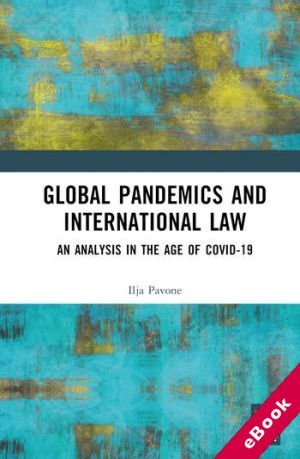
The device(s) you use to access the eBook content must be authorized with an Adobe ID before you download the product otherwise it will fail to register correctly.
For further information see https://www.wildy.com/ebook-formats
Once the order is confirmed an automated e-mail will be sent to you to allow you to download the eBook.
All eBooks are supplied firm sale and cannot be returned. If you believe there is a fault with your eBook then contact us on ebooks@wildy.com and we will help in resolving the issue. This does not affect your statutory rights.
This book reviews the efficacy of Global Health Law, assessing why its legal framework based on the International Health Regulations did not represent a valid tool in the containment of modern global pandemics such as COVID-19.
The book provides an introduction to the international legal framework surrounding epidemics and pandemics and the main global governance issues that have been generated by the COVID-19 outbreak. It highlights the main shortcomings of Global Health Law, while also including practical proposals to improve the WHO’s mechanism to prevent and respond to future disease outbreaks, such as the New Pandemic Treaty. Emphasis is placed on what has not worked in the international, regional and national responses to COVID-19. It is argued that the pandemic has shed light on the weaknesses of global and domestic health law. By identifying legal gaps and providing legal arguments, the book contributes to the historical and conceptual foundation as well as the practical development of international law in the new age of COVID-19, with the ultimate goal of stimulating legal reform in this vital new era.
The work will be essential reading for academics, researchers and policy-makers working in International Law, Health Law, Environmental Law, Human Rights Law, Biolaw, and the Law of International Organizations.